Lesson: Wind Power
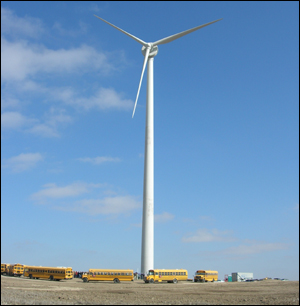 (Lesson courtesy of PBS’ “NOW with Bill Moyers” and Claudia Fetters.) Level: Grades 9-12, in physical science, earth science, or environmental science; Middle School science. Time required: One to three 90-minute block periods, depending upon which parts of the lesson is performed in class and at home.
(Lesson courtesy of PBS’ “NOW with Bill Moyers” and Claudia Fetters.) Level: Grades 9-12, in physical science, earth science, or environmental science; Middle School science. Time required: One to three 90-minute block periods, depending upon which parts of the lesson is performed in class and at home.
This lesson plan outlines an inquiry-based activity that helps students discover the basics of wind power technology by building and refining a wind turbine. In addition, students examine the concept of renewable energy, identify the benefits and drawbacks of wind power, and compare its costs and impact on the environment with other energy sources.
LESSON OBJECTIVES
By the end of this lesson, students will be able to:
1. Explain the use of wind power as a renewable resource.
2. Build models of wind turbines and experiment with the types of changes that will increase efficiency.
NATIONAL STANDARDS
Physical Sciences
Standard 9: Understands the sources and properties of energy
Standard 10: Understands forces and motion
Level IV, Benchmark 1 – Knows that magnetic forces are very closely related to electric forces and can be thought of as different aspects of a single electromagnetic force (moving electric charges produce magnetic forces and moving magnets produce electric forces); the interplay of these forces is the basis for electric motors, generators, radio, television, and many other modern technologies
Level IV, Benchmark 8 – Knows that laws of motion can be used to determine the effects of forces on the motion of objects (e.g., objects change their motion only when a net force is applied; whenever one object exerts force on another, a force equal in magnitude and opposite in direction is exerted on the first object; the magnitude of the change in motion can be calculated using the relationship F=ma, which is independent of the nature of the force)
Nature of Science
Standard 12: Understands the nature of scientific inquiry
Level IV, Benchmark 2 – Designs and conducts scientific investigations (e.g., formulates testable hypotheses; identifies and clarifies the method, controls, and variables; organizes, displays, and analyzes data; revises methods and explanations; presents results; receives critical response from others)
Level IV, Benchmark 5 – Knows that conceptual principles and knowledge guide scientific inquiries; historical and current scientific knowledge influence the design and interpretation of investigations and the evaluation of proposed explanations made by other scientists
Standard 13: Understands the scientific enterprise
Level IV, Benchmark 6 – Knows that creativity, imagination, and a good knowledge base are all required in the work of science and engineering
MATERIALS
Part One
• Handout: Wind Power Background Sheet (PDF file)
• Internet access
•Please note: this lesson was originally designed in conjunction with a PBS broadcast that is no longer available. eGFI recommends replacing it with a current video available online, “Planet Forward: Fossil Fuels & Beyond, Chapter 2–Follow the Wind” (approx. 7 mins.), or one from the AWEA video page, drawn from various sources.
Parts Two and Three
Handout: Wind Machine Instructions (PDF file)
Wind Turbine Construction Materials
Each classroom will need: 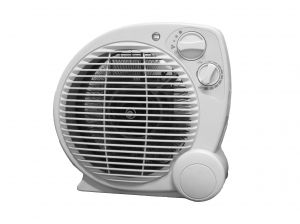
• small electric fan or hair dryer
• DC voltmeter
Each student group will need:
• small DC toy motor
• cork (at least 2 cm in diameter)
• stiff ruler or dowel
• 60 cm of thin electrical wire with alligator clips
• a rubber band
• scotch tape
• 6 paper clips
• wire cutters
• scissors
• pieces of cardboard of various thicknesses
BACKGROUND FOR TEACHERS
Wind is caused by atmospheric pressure changes that occur because the sun heats air in some areas more than others. For more information on how wind forms, including some helpful graphics illustrating how air pressure differences start the wind blowing, see USA TODAY’s Weather Basics section on Understanding Winds.
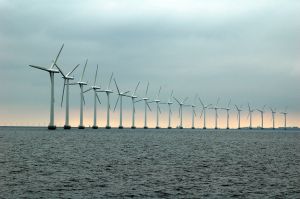
The power of wind energy can be harnessed to generate electricity. To make electricity, the shaft of a wind turbine is connected to an electrical generator at the top of the turbine’s pole or tower. The generator converts the mechanical energy of the spinning turbine shaft to electricity and sends that energy down the tower along wires to a power grid or energy storage area. See the NOW Web site’s close-up of a wind turbine for additional detail on how they work. The Related Resources section of this lesson plan (below) also lists Web sites rich with information on wind turbines and wind energy in general.
This lesson plan outlines an inquiry-based activity that helps students discover the basics of wind power technology by building and refining a wind turbine. In addition, students examine the concept of renewable energy, identify the benefits and drawbacks of wind power, and compare its costs and impact on the environment with other energy sources.
Assumed Student Prior Knowledge
It is assumed that students will already be familiar with what causes wind and the basics of motion and mechanics. Students should also know how to calculate an average.
LESSON PROCEDURE
Part One: What Is Wind Power and How Can It Be Used?
1. Have the students brainstorm a list of ways we can generate electricity. List student ideas where the class can see them. Then, ask students to examine the list and decide:
• Which way do they think most of the power is generated in their area?
• Which ways do they think are the most damaging to the environment?
• Which ways might be the least damaging?
• Which ways could be considered renewable, or inexhaustible?
• Which ways cost the most money? (See NOW’s energy source cost comparison chart for helpful data.)
2. Explain to students that they will be exploring one renewable energy source – wind power — in greater depth. To help students discover the basics of wind-generated power, send them to the computer and have them research the information needed to complete the Wind Power Background Sheet provided with this lesson. The Web sites they need for their research are listed on the worksheet itself. After completing the handout, follow up with a class discussion to clarify any questions students might have. Be sure they understand the concept of renewable vs. non-renewable resources as well as the actual construction of a wind turbine. It is also important that they understand the wind power will not work in all areas of the country. (See NOW’s Wind Power Map of the U.S. showing where wind power is the most and least available.)
3. Next, show a video on wind power. To focus student viewing, ask students to watch for answers to the following questions:
• What are the benefits of wind power as a resource?
• What drawbacks do you see?
• In what ways can power production be compared to a crop?
• If you were a farmer, would you be interested in making money from the wind?
4. After watching the video, discuss the answers to the questions above. The NOW Web site’s summary of benefits and drawbacks to wind power, provides information to support this discussion.
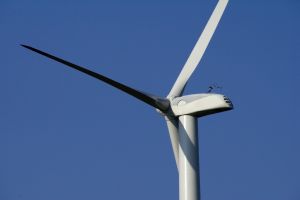 Part Two: Building a Wind Turbine
Part Two: Building a Wind Turbine
1. Explain to students that they will work together to build a simple wind-powered turbine. Let them know that groups that design the most effective wind turbines will receive a prize.
2. Divide students into groups of three or four. Try to make each group as homogenous as possible, pairing strong students with weaker ones.
3. Distribute the Wind Machine Instructions handout to students. For more ideas, you may wish to provide students with some of the Web sites listed in the Related Resources section of this lesson plan, below. Be sure each group also has the basic materials needed to construct their wind turbines. Remind students that they are limited to the use of those materials.
4. Once groups complete the initial construction of their turbines, they should experiment with variables to produce what they expect to be the best turbine. Variables can include changing length and width of blades, using different weights of cardboard for the blades, using different angles for the blades, even changing the number of blades used.
5. Allow about 90 minutes for the construction of this device. You will need to vary the time based on the abilities of your students. Students should be allowed to do preliminary testing as they design. If time is limited, assign the construction for outside of class and allow for preliminary testing at the beginning of the next class.
Part Three: Testing the Designs
1. Determine which group has constructed the most effective wind turbine by testing each machine and noting which one produces the greatest number of volts. During the testing, students should use goggles.
2. To test, set each turbine 30 cm from an artificial wind source, such as a fan or hair dryer. Turn on the wind source and measure the voltage produced. Each turbine should have three trials so that an average voltage can be calculated.
3. You can also measure which turbine requires the least amount of wind for start up by testing the turbines at various distances from the wind source.
4. Award prizes to winners for both competitions.
Assessment Recommendations
Students should be asked to write a one or two page report on the process of building and refining their wind turbines, including their subsequent conclusions. Evaluation of the report should be based on completeness, depth of understanding, and correct use of terminology. Consider awarding bonus points to those students with prize-winning designs.
Extension Ideas
1. Be sure to review NOW’s Starter Activities and Take Action ideas related to this lesson’s topic.
2. Students may wish to extend this lesson by producing other models of wind turbines, possibly for a science fair. A Savonius, or vertical, wind turbine can be built with plastic water bottles by following the detailed instructions at the Renewable Energy Web site. You can also download free plans for building wind turbines at the PicoTurbine Web site.
3. For elementary students, the turbines can be built in advance with the exception of the blades. Students can then vary the shape and weight of blades more easily and with a minimum of difficulty. Such a project would be a good opportunity to have older and younger students working together.
4. Students can research the applications of wind power technology in various countries around the world. Such research could be an excellent way to include ESOL students and their culture in the classroom. (NOTE: NOW’s Web site provides a graphic showing and comparing the use of wind power in the U.S. and Europe.)
RELATED RESOURCES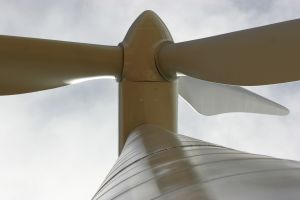
Below are some sites that provide useful information related to this lesson’s topic.
The American Wind Energy Association
This Web site has a well-written section of FAQ’s as well as references to more technical applications of wind energy.
Energy Quest: Energy Education from the California Energy Commission
This site is provides activities and information targeted to younger students, but has extensive references for teachers as well. The site addresses all the forms of energy and compares them in depth.
This page has several links for more information and resources on the science and technology of wind.
The University of Oregon has posted a page of college notes from a Physics 162 lecture on, “Wind Energy.” It outlines the basics/properties of winds, windmills and its efficiency, energy calculations, costs of wind energy and goals for wind power.
The National Renewable Energy Laboratory
This site for the U.S. Department of Energy’s lab for renewable energy research and development includes many links to other sites and activities. This lesson’s directions for building wind turbines were adapted from this site.
This site is provided by the Pembina Institute in Canada, which describes itself as a non-profit think tank and activist organization. It features backgrounders on renewable energy and technology, as well as detailed construction plans for renewable energy models, including a complex wind turbine model suitable for high school science projects.
This April 5, 2001 segment from THE NEWSHOUR WITH JIM LEHRER discusses business and legislative aspects of the wind power industry.
The Danish Wind Energy Association has produced an excellent site listing information, activities, and a FAQ. It has a special section entitled, “Wind with Miller” that focuses on explanations and activities for students.
About the Author
Claudia Fetters is a 21-year veteran of science education, having taught biology, earth science and astronomy during her career. She currently teaches at Westfield High School in Chantilly, Virginia. She also works with a group at Purdue University to develop instructional CD’s on biology topics.
Filed under: Class Activities, Grades 9-12, Grades 9-12, Lesson Plans








